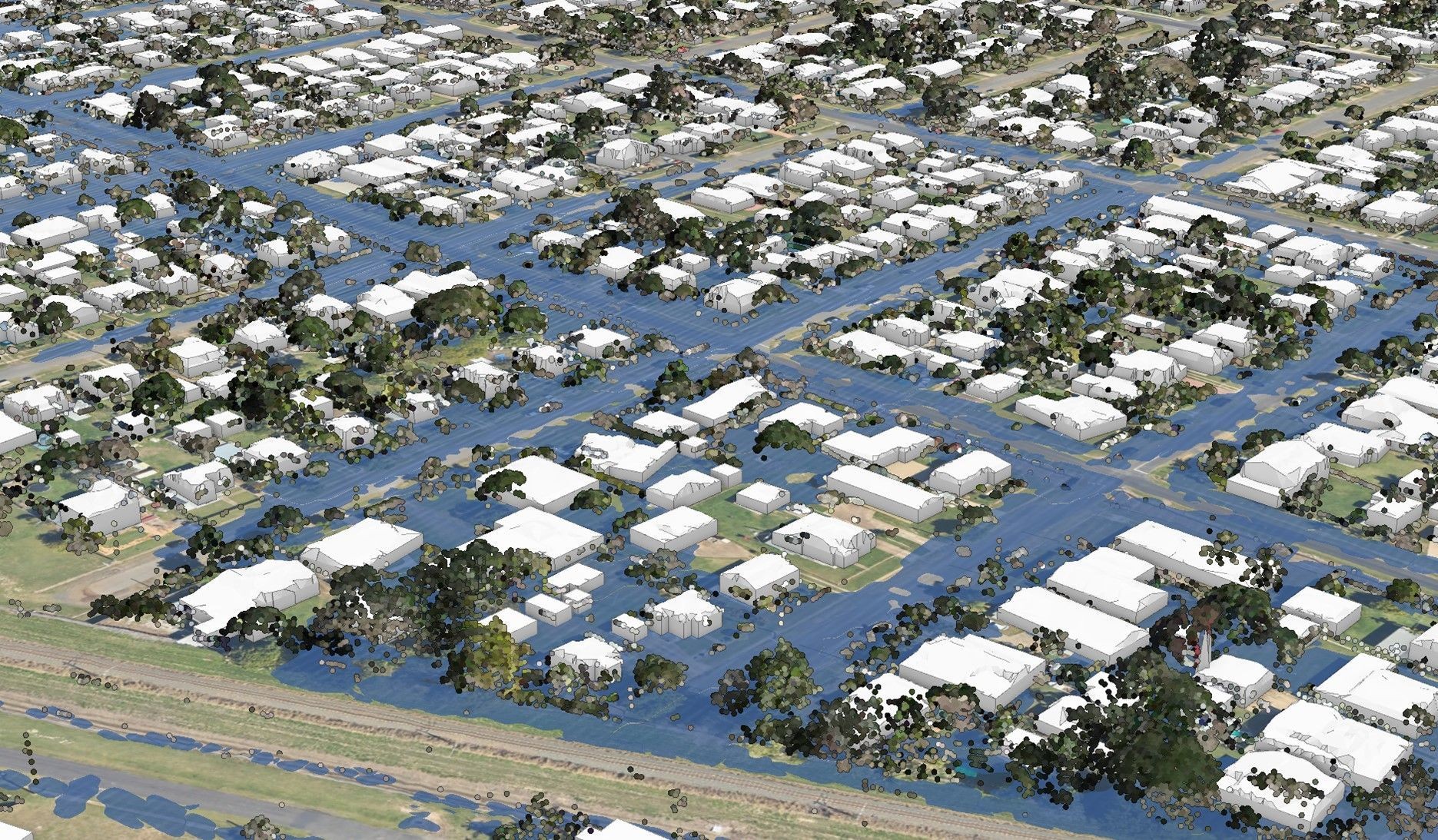
Using artificial intelligence and digital twins to inform our most vulnerable

Flood management solutions can have wide reaching benefits. Not only can they protect lives, livelihoods and essential infrastructure, they can also enhance the wellbeing of local communities by helping residents sleep easy in the knowledge their homes and families are protected in the event of a storm.
In this article, Jordan Maultby, Senior Engineer, Australia, details how he engaged octogenarians in conversations about flood risk using a digital twin of their neighborhood, helping them to understand flood behaviors, gain their trust and explore ideas which help alleviate anxiety about future flooding.
During a community consultation session, I had the pleasure of speaking with elderly residents whose homes had recently flooded for the first time in more than 40 years during a strong storm. Also on my table was another senior engineer and two local councilors.
Some of the residents we’d invited didn’t attend due to fatigue of previously having spoken out on other experiences and no visible action being taken. Thankfully those in attendance were forthcoming in sharing their experience of flash flooding, providing information on the path, depth and pace of the flood water during a recent storm event. With these insights shared, I showed them a digital twin I had created of their neighborhood which used AI to generate much of the underlying data (such as buildings and vegetation). After helping them locate their home we showed a simulated flood path of the recent storm event. They immediately validated that the model was ‘doing a good job’ of replicating their actual experiences. They were also able to pinpoint specific events that occurred, like a surcharging sewer manhole, which is of great value to our work. From there I could explain the flood behavior – where it came from, and why.
Model engagement
The residents earnestly appreciated being able to see what had happened in 3D. It was immediately intuitive — they’ve physically seen it in 3D their whole lives. They could see their property and understand they weren’t alone in what had happened. Finally, they understood why their homes had been affected for the first time in living memory. In events such as a flood, people want to understand why it occurred. Because if it happened once, they know it can happen again. Through the digital twin we were able to show them why more easily.
In events such as a flood, people want to understand why it occurred. Because if it happened once, they know it can happen again. Through the digital twin we were able to show them why more easily.
With the residents deciding our model was trustworthy, we began talking about a flood risk management strategy, using the 3D environment to step through ideas like restoring creeks and delaying floodwaters in beautified public open spaces. For the residents, it quickly became a glimpse into a better future — one where they’re safer, their homes are less likely to flood and their local neighborhood is revitalized. It was exciting, but also mutually comforting to see the impact of hope. Our communities are desperate for it, especially our most vulnerable.
Added dimension, added value
This consultation session highlighted the value of using a 3D model over traditional 2D maps. The maps we had on hand went untouched. The digital twin allowed the residents to pinpoint their home, quickly orientate themselves and understand what had happened. Then they were able to speak with us on a level playing field to discuss potential solutions. They contributed to the discussions with confidence and went home better informed. An added benefit was transparency of information; the consultees knew we weren’t trying to hide anything. We were there to listen, and help.
The most recent IPCC report stressed that repeated exposure to extreme weather events can seriously impact mental wellbeing. Some of these mental health effects include loss of sense of identity and place, heightened anxiety and risk of depression, along with post-traumatic stress disorder. By using digital twins during consultation activities, we can better engage communities, empowering them with deeper understanding and a chance to be part of a meaningful solution.
This consultation opened my eyes to the power of using AI and 3D visualization to share information with local stakeholders. If anything, the 84-year-old resident who risks illness or injury to place sandbags in front of her garage during a storm can now make more informed decisions as to whether it’s necessary and live with the hope that one day she won’t have to at all.

